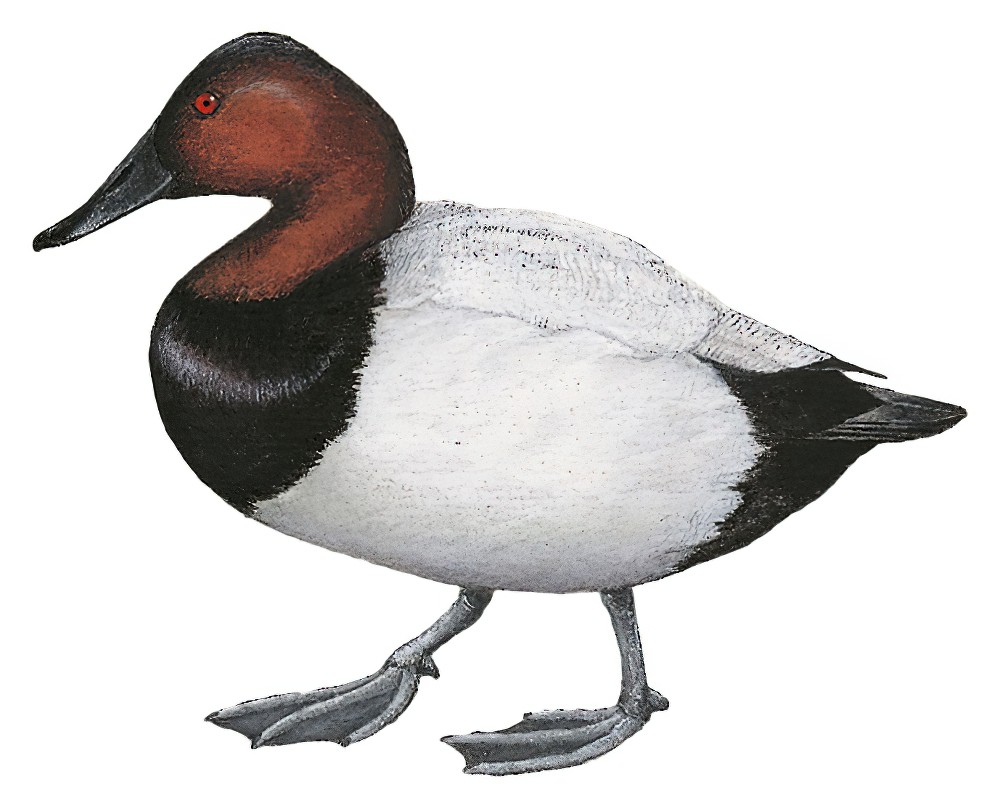Canvasback / Aythya valisineria

Canvasback
SCI Name:
Protonym: Anas valisineria Am.Orn. 8 p.103 pl.70 fig.5
Taxonomy: Anseriformes / Anatidae / Aythya
Taxonomy Code: canvas
Type Locality: eastern United States.
Author: Wilson, A
Publish Year: 1814
IUCN Status: Least Concern
DEFINITIONS
AYTHYA
(Anatidae; Ϯ Greater Scaup A. marila) Gr. αιθυια aithuia unidentified seabird mentioned by Aristotle, Hesychius, and other authors. In modern times associated with a variety of seabirds, including a shearwater, a cormorant, a duck, and an auk (cf. Gr. myth. Thyr or Thyrie, mother of Cygnus, who was changed into a waterbird); "130. Aythya marila. — Anas marila Lin." (Boie 1822); "Aythya Boie, 1822, (before May), Tagebuch Reise Norwegen, p. 351. Type, by monotypy, Anas marila Linnaeus." (Johnsgard in Peters, 1979, I, ed. 2, p. 482).
Var. Aethyia, Aethyja, Aithyia, Aithya.
Synon. Aristonetta, Dyseonetta, Fuligula, Fulix, Glaucium, Hydrobates, Ilyonetta, Marila, Nettarion, Nyroca, Penelope, Perissonetta, Zeafulix.
valisineria
"Valisneria Americana, a new species ... The root shoots, in the fall, fleshy and almost esculent buds or protuberances, which stand during the winter, and are the chief food of the anas ferina in those parts. ... The Valisneria Americana is called channel-weed in the river Delaware, and canvass-back-duck-food in the Susquehannah." (Rafinesque 1804); “Vallisneria is a genus of aquatic plants, the wild celery [freshwater eelgrass] ... named for Antoine Vallisner, a French botanist [= Antonio Vallisnieri de Vallisneri (1661–1730) Italian botanist]. The name was applied to the bird from its fondness for this plant as food” (Coues 1882); "As Dr. Trotter points out, Wilson consistently misspells this word, and if we are to follow original spellings to the extent of "pensilvanica" and "hiemalis," it would seem that we must follow the habit of the duck and swallow our valisineria even though it be with less of a relish than he experiences." (Stone in Trotter 1907) (Aythya).
UPPERCASE: current genus
Uppercase first letter: generic synonym
● and ● See: generic homonyms
lowercase: species and subspecies
●: early names, variants, mispellings
‡: extinct
†: type species
Gr.: ancient Greek
L.: Latin
<: derived from
syn: synonym of
/: separates historical and modern geographic names
ex: based on
TL: type locality
OD: original diagnosis (genus) or original description (species)












